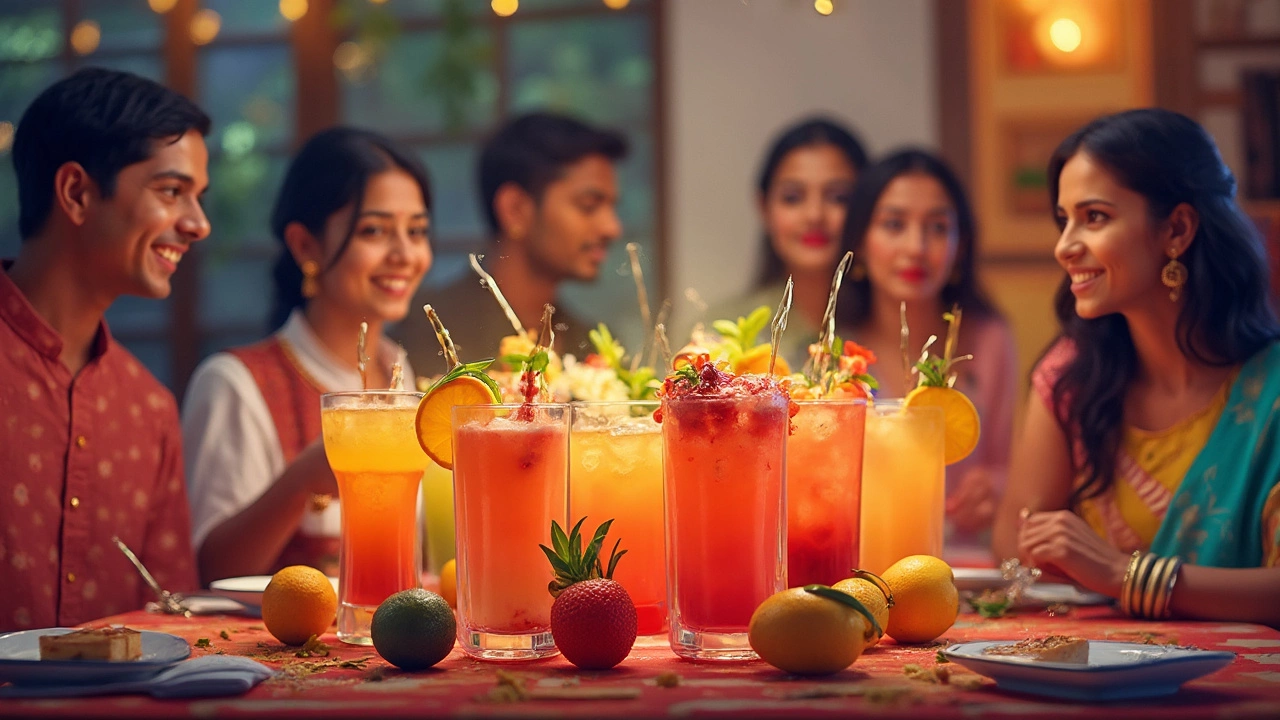
You grab a mocktail instead of a cocktail, thinking it’s the healthy choice—problem solved, right? Not so fast. Underneath those bright fruit garnishes and fancy glasses, mocktails can pack some surprises that aren’t always good.
The biggest pitfall? Sugar. A lot of bars and restaurants mix mocktails with fruit juices, flavored syrups, or sugary sodas just to make them taste more interesting. Some mocktails actually have as much, or even more, sugar than regular soft drinks. If you're trying to cut back on sugar, a few rounds of mocktails could be your sneakiest enemy.
Besides sugar, many mocktails hide behind words like “fresh” or “natural” while actually containing artificial flavorings and colorings. Sure, they look pretty and sound healthy, but take a closer look at what’s in the glass next time. If you’re making them at home, you have more control, but most of us just go with whatever’s handed to us at a party or bar.
- The Sugar Trap
- Artificial and Hidden Ingredients
- Missing the Social Experience
- Unfulfilled Expectations
- Are Mocktails Really That Healthy?
- Smarter Mocktail Choices
The Sugar Trap
This is where most people get tripped up with mocktails. They sound lighter and healthier because there’s no alcohol, but a lot of them are loaded with sugar. Why? Because bars and even home recipes want to keep it tasty, so they pour in fruit juices, soda, simple syrup, or even sweet purees.
Here’s the punchline: A single glass of pineapple or cranberry juice easily has 25-30 grams of sugar. If your mocktail includes more than one juice, or if it’s topped with soda, you’re basically drinking dessert. Some restaurant menus even serve mocktails that top out at 40 grams of sugar in one glass—that’s about as much as a can of full-sugar Coke.
| Beverage | Sugar (per 8 oz) |
|---|---|
| Orange Juice | ~23g |
| Cranberry Juice Cocktail | ~28g |
| Pineapple Juice | ~25g |
| Regular Cola | ~27g |
| Average Mocktail | 25-40g |
If you’re trying to cut back for health reasons or just don’t want a sugar crash before you’ve even hit the appetizers, pay close attention to what’s in your glass. The sweeteners in mocktails also spike your blood sugar a lot faster because you’re usually drinking them fast while chatting, not sipping over hours like a glass of wine.
If you’re out, don’t be shy about asking how your mocktail is made. At home, you can actually skip the syrups and try sparkling water with muddled fruit or herbs. It’s a huge win for your health—and your energy levels. Remember, just because there’s no alcohol, doesn’t mean there’s no downside.
Artificial and Hidden Ingredients
The word “mocktail” makes you picture something fresh and wholesome, but what’s actually in the glass? Here’s the truth: a lot of mocktails at bars and restaurants are heavy on artificial stuff. It’s not just about tossing some orange juice in a glass—think chemical flavor enhancers, fake colors, and preservatives thrown in to jazz things up or keep the drink looking pretty all night.
Some spots rely on bottled mixes or shelf-stable syrups packed with lab-made ingredients a home kitchen never sees. These give a super-bright color or a burst of flavor that tastes fruity but isn’t real. For example, grenadine syrup in a “virgin sunrise” often has high-fructose corn syrup and red dye, not actual pomegranate juice. Even the “fresh” fruit flavor in a lot of tropical mocktails can come from artificial extracts. If you’ve ever wondered why your strawberry mocktail has no seeds or pulp, that’s usually why.
Check out what’s really going into your glass:
- Color additives: Blue curaçao syrup or green melon syrup gets its pop from artificial dyes, not the fruit.
- Preservatives: Bottled lemon or lime juice often contains sodium benzoate to extend shelf life.
- Flavor enhancers: Things like ethyl maltol or vanillin show up in bottled mixes to mimic real fruit or vanilla.
If you’re sensitive to these, you might end up with headaches or stomach problems instead of a relaxing night. Even if you’re not, it still means your “natural” drink can be far from it.
Here’s a look at the difference between homemade and bar mocktails:
| Ingredient Type | Homemade Mocktail | Restaurant/Bar Mocktail |
|---|---|---|
| Sugar Source | Real fruit, honey, simple syrup (sometimes) | Flavored syrups, soda, juice concentrate |
| Colors | Natural (fruit, herbs) | Artificial dyes |
| Flavorings | Fresh herbs, spices, fresh juice | Extracts, concentrates, artificial flavors |
| Preservatives | Rarely used | Common in bottled mixes |
So, if you really care about what’s going into your body, ask your bartender how the mocktail is made or try making it at home from scratch. Reading the labels on store-bought mixers can also save you from a load of unwanted extras.
Missing the Social Experience
Saying no to alcohol and grabbing a mocktail might seem like an easy swap, but the vibe often changes pretty quickly in a social setting. Drinking is still a big part of how people bond at parties, bars, or weddings. When you’re holding a colorful glass of juice while everyone else is sipping cocktails, you might feel left out of inside jokes or the usual clinking of glasses. It’s not just in your head—social scientists have looked at how shared rituals, like toasts or rounds of drinks, make people feel connected.
If your friends or coworkers are used to celebrating with «real» drinks, ordering a mocktail can make you stand out more than you’d like. People might ask nosy questions: "Why aren't you drinking?" or "Are you on a cleanse?" It gets awkward, and sometimes you end up explaining yourself more than just enjoying the night.
Add to that the fact that mocktails sometimes come in different glassware than cocktails. You don’t get the fancy martini glass or the tall, icy mojito setup by default. That little detail can really change things if you like to feel part of the group. At my cousin's wedding, I went all night with a basic tumbler of orange juice while everyone else had signature cocktails with clever names—I definitely noticed the difference.
Some bars are catching on and making their mocktail menu just as trendy as the cocktails, but plenty haven’t bothered yet. If you’re going out with friends, call ahead or look at the menu to see what your options are. And if you host a get-together, offer cool drinkware and garnish so everyone feels included, whether their glass has rum or not.

Unfulfilled Expectations
Ordering a mocktail seems like a safe bet if you want to feel included without drinking alcohol. But let's be honest—a lot of mocktails set you up with big promises and then kind of flop. People expect the flavor, complexity, and experience of a cocktail, just minus the booze. Spoiler: That’s not always what shows up.
Many bars just toss together some juice and soda, call it a "mocktail," and charge as much as a real cocktail. At one famous chain restaurant, the best-selling "mocktail" is basically Sprite with grenadine and a few maraschino cherries. You’re paying premium prices for something you could whip up at home for pennies. No layered flavors, no fancy bitters, nothing you’d remember the next day.
There's also the vibe side of things. If you’re out with friends and everyone else is sipping curated cocktails, that “special drink” feeling fizzles when your glass is smaller, not as dressed up, or missing that extra touch. Sometimes staff clearly see a mocktail as a lesser priority—less attention to garnish, fewer name-brand options, and rarely the same cool glassware.
According to a 2023 survey from a popular drink review site, 41% of people choosing mocktails in social situations said their drink "felt like an afterthought" compared to cocktail drinkers. Here’s how that sense of letdown stacks up:
| Expectation | Reality (as reported by survey respondents) |
|---|---|
| Flavor Complexity | "Too sweet; felt basic" |
| Presentation | "Plain glass, no garnish" |
| Bar Experience | "Didn’t feel special" |
So if you're excited to try a trendy new non-alcoholic menu, keep your expectations in check. Ask questions about what's actually in the drink. Or, better yet, see if the bartender can make something custom—don’t settle for a childish sugary mix that leaves you wishing you’d just gone for water.
Are Mocktails Really That Healthy?
It’s easy to see why people go for mocktails when they want to skip the alcohol. No hangovers, no tipsiness, and you can drive home without worrying. But take a closer look at what actually goes in those glasses and you’ll spot a few red flags hiding under the umbrellas.
First off, the sugar thing is a pretty big deal. One popular “virgin” mojito from a chain restaurant has 30–40 grams of sugar in a single glass. That’s basically like chugging a can of cola. Even the “refreshing” ones, like a non-alcoholic piña colada or fruity punch, are usually heavy on the pineapple juice and sugar syrup. So if you’re hoping to make a healthy swap, keep an eye on what’s sweetening your drink.
| Drink Type | Average Sugar (g) |
|---|---|
| Soda | 39g (12 oz) |
| Mocktail (restaurant, popular recipes) | 30–45g (12 oz) |
| Fresh Orange Juice | 22g (8 oz) |
Let’s not forget about calories, either. A lot of mocktails land in the same ballpark as their boozy buddies. That “light” feeling you’re chasing might just be sugar rushing through your system. Drinking a few can easily put you over your usual calorie limit without you even realizing.
Now, what about vitamins from fruit juices? Sure, you’ll get a little Vitamin C if real fruit is involved, but in most places, bartenders use commercial juice blends or premade syrups that are low on nutrition and high on sweetness. If you really want health perks, you’re better off sipping on water with a citrus wedge or making fresh fruit infusions at home.
Some folks pick mocktails thinking it’ll be better for digestion or less harsh on the liver. It's true there’s no alcohol to mess with your metabolism. But with too much sugar or packaged syrups, you’re basically trading one problem for another.
Tl;dr? Mocktails ditch the booze, but if you don’t pay attention, they can be just as loaded with sugar and empty calories as soft drinks. Always check what’s actually in your glass if you care about the healthy part!
Smarter Mocktail Choices
You don’t have to ditch mocktails altogether just because there are some downsides. You just need a game plan to make sure you’re actually doing your health a favor. Here’s where a little know-how comes in handy and saves you from the classic mocktail mistakes—especially when it comes to sugar and weird additives.
Start by asking what’s actually in the glass. At bars or restaurants, don’t be shy—ask if they use real fruit, and request to swap out sugar syrups or sodas for sparkling water. As odd as it sounds, most places are happy to whip up a mocktail to your taste if you ask nicely. Make “light on the syrup” your new catchphrase.
At home, you have way more control. Use whole fruits, fresh herbs like mint or basil, and lots of ice to make drinks feel special without all the additives. Think watermelon, lime, cucumber, and berries—these add real flavor without the sneaky calories. If you want a little sweetness, try a drizzle of honey or agave instead of those neon syrups.
Here's a quick look at how some common mocktails stack up when you swap out sugary mixers for fresher ingredients:
| Mocktail Name | Standard Recipe (g sugar) | Smart Swap Version (g sugar) |
|---|---|---|
| Virgin Mojito | 24 | 8 (swap soda for sparkling water, use fresh lime/mint) |
| Shirley Temple | 33 | 10 (use real cherry & lemon, club soda) |
| Cranberry Spritzer | 25 | 7 (half cranberry juice, half sparkling water) |
Another smart tip: keep an eye on portions. It’s easy to chug down three or four since they’re alcohol-free, but the sugar still adds up. Try serving mocktails in smaller glasses, especially if you’re hosting.
If you’re looking for something totally different, kombucha or dry sodas are popping up everywhere as low-sugar swap-ins. They give you the feeling of having something special in your hand, minus the heavy sweetness. Even my husband, Lachlan, was surprised how much he liked cucumber soda as a mixer the last time we tried it with friends.
In short, being label-smart and ingredient-savvy can turn mocktail time into a healthy treat instead of a sugar bomb. With a bit of effort, you can get all the fun, taste, and fizz—just with smarter choices.
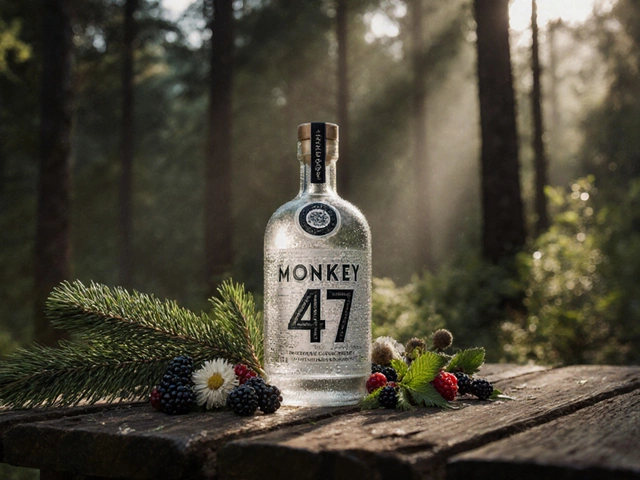
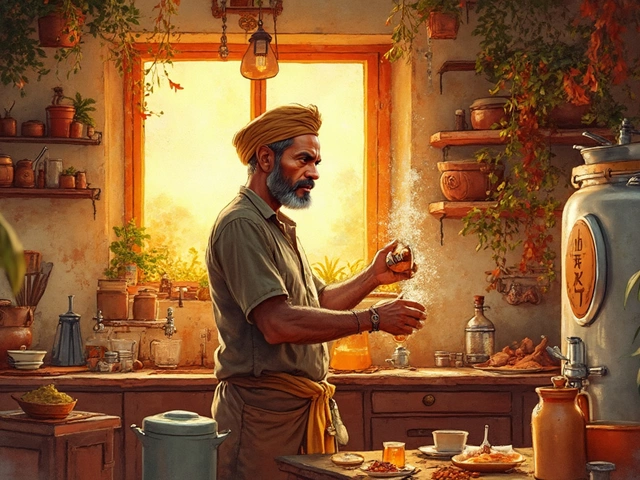
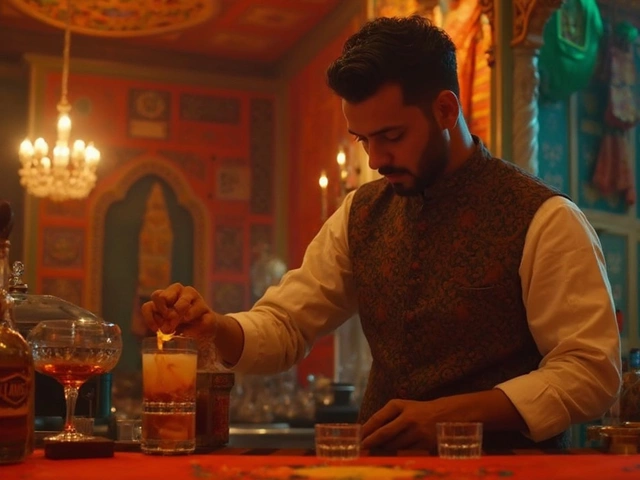

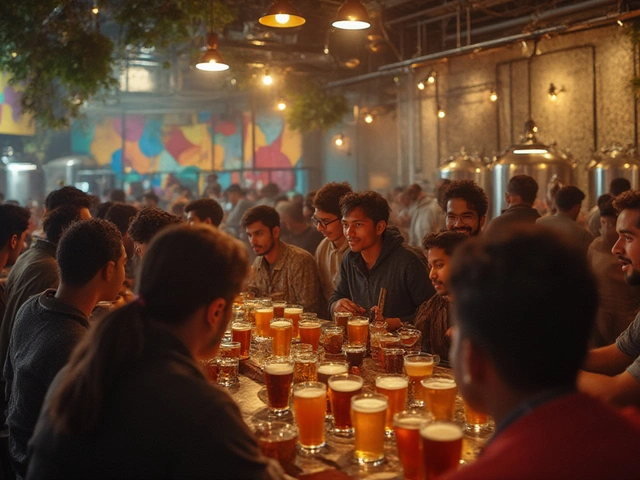
Categories